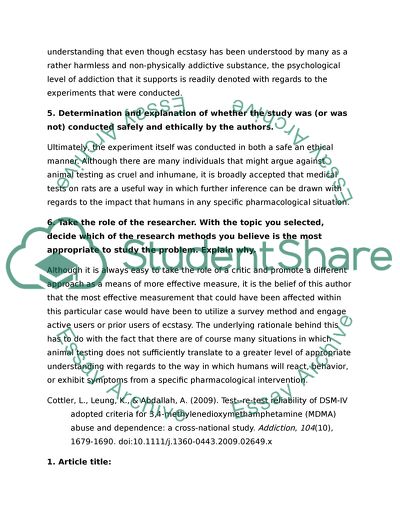Cite this document
(Pharmaceuticals Hallucinogens such as MDMA Research Proposal Example | Topics and Well Written Essays - 1750 words, n.d.)
Pharmaceuticals Hallucinogens such as MDMA Research Proposal Example | Topics and Well Written Essays - 1750 words. https://studentshare.org/health-sciences-medicine/1808365-methods-in-research-introduction
Pharmaceuticals Hallucinogens such as MDMA Research Proposal Example | Topics and Well Written Essays - 1750 words. https://studentshare.org/health-sciences-medicine/1808365-methods-in-research-introduction
(Pharmaceuticals Hallucinogens Such As MDMA Research Proposal Example | Topics and Well Written Essays - 1750 Words)
Pharmaceuticals Hallucinogens Such As MDMA Research Proposal Example | Topics and Well Written Essays - 1750 Words. https://studentshare.org/health-sciences-medicine/1808365-methods-in-research-introduction.
Pharmaceuticals Hallucinogens Such As MDMA Research Proposal Example | Topics and Well Written Essays - 1750 Words. https://studentshare.org/health-sciences-medicine/1808365-methods-in-research-introduction.
“Pharmaceuticals Hallucinogens Such As MDMA Research Proposal Example | Topics and Well Written Essays - 1750 Words”. https://studentshare.org/health-sciences-medicine/1808365-methods-in-research-introduction.


